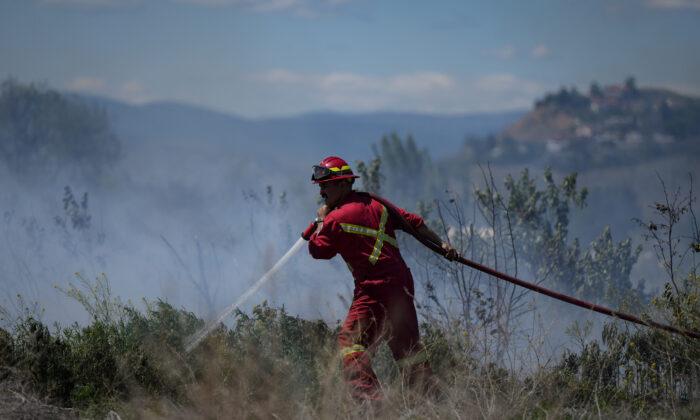Steve Pynes is a rarity—he’s the only historian he knows of that is dedicated specifically to the study of fires. And that gives him a unique perspective on Canada’s current wildfires.
“Canada has had fires at both ends burning at the same time—the 1908 fires were just a kind of rolling thunder from Vancouver all the way to Maine. So what we’re seeing is not unprecedented,” Pyne told The Epoch Times.
“But I do think it’s historic,” he added. He said it’s historic because the response is much different than in the past.
“It was a much more local response for one thing,” Pyne said. “Now it’s global. I mean, we’ve got satellite images and aerial views. We’ve got media that immediately send [those images] around.”
People in the past saw fires more as a normal part of life and nature, said Pyne, who is an emeritus professor at Arizona State University. They prepared differently for them and had different ways of fighting fires.
Pyne said we can learn a lot about how to deal with fires today by remembering what we’ve forgotten.
“Fire is an issue that’s always been there. We forgot or didn’t know or didn’t pay attention,” Pyne said. He recalled the so-called “Dark Days” of smoke that enveloped eastern Canada and New England, particularly the famous Dark Day of May 19, 1780.
Lower Tolerance for Fire
With more of the land being settled, there’s more chance that any given fire will carry greater risk to people than it did in the past.Fires that would have been left to burn in the past are quickly stomped out, Pyne said. The primary approach to fire is to eradicate it with machinery—air tankers, helicopters, bulldozers, and more.
Yet the natural way of the land is for forests to burn and replenish; have pockets of new-growth and old-growth variety. Those are more resilient forests.
“We’ve found that just taking fire out only makes it worse,” Pyne said.
He recalled maps he studied from 1912 showing burned areas of Nova Scotia. Over a third of the province was either burned or recovering from burning, he said.
“This is Nova Scotia a century ago. So we’ve changed that completely,” Pyne said. “We’ve changed that character.”
Especially in the backcountry of B.C. and Alberta, he said, there’s now little tolerance for fire. Logging and tree-planting for future harvests represent economic interests in these areas, and fire threatens those interests.
But the forestry industry—along with mining, agriculture, and other industries—has made the land more vulnerable to fires in many ways.
Tree-planting in the forestry industry generally creates “forests” that are actually “plantations,” with less variety of plant life. Pine and spruce are unnaturally dominant, with herbicide and brush saws used to eliminate competing species. Swaths of land have trees that are all the same age.
“Plantation forests are exceedingly vulnerable [to fire],” Pyne said.
“It’s not just climate change. It’s changing land-use. It’s changing our economy, changing our transport systems, changing how we do logging and agriculture, and how we build our cities. All of these things are now contributing,” Pyne said.
‘Hygiene’ Against Fire
“We’ve forgotten that towns can burn,” Pyne said.In the past, Canadians and Americans used to build towns with that in mind. They engaged in a sort of “hygiene” against fire. For example, controlled burns around a town would deplete any fuel for an approaching fire. Buildings were “hardened” by eliminating weak points for embers to catch hold.
Fires are like a disease that was eradicated in cities and towns, and people have forgotten to continue preventative hygiene, so the disease is flaring back up, Pyne said.
A change in mentality is needed, he added.
The fact that he’s the only fire historian he knows of—there are a smattering of books on fires in other parts of the world, he said, but apparently, no one fully dedicated to the study—shows academia’s lack of interest in the subject.
“All of the other ancient elements—earth, air, and water—have academic disciplines devoted to their study, whole departments, and universities,” Pyne said. “The only fire department at a university is the one that sends emergency vehicles.”
Fire defines humans in some ways, Pyne said. “It’s what we do that no other creature does. How did we lose what had been a defining trait of our being?”





